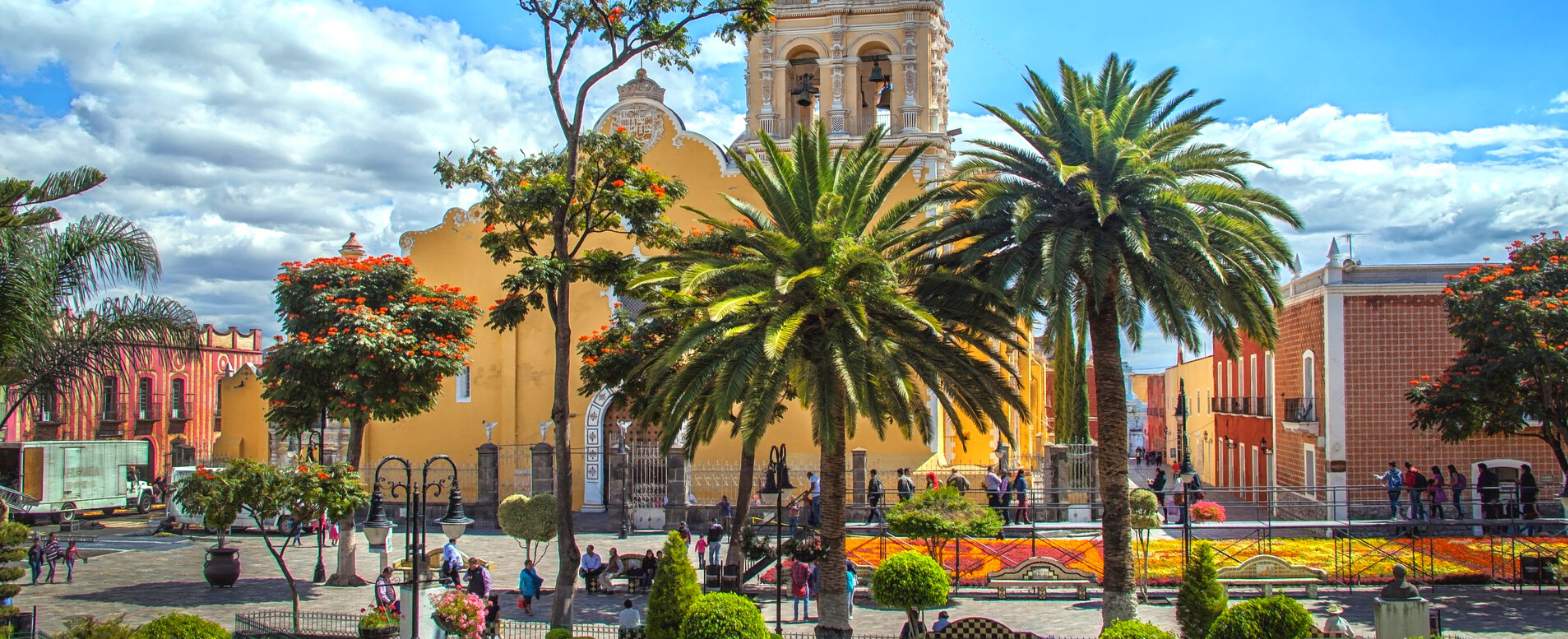Obtaining your Mexico Resident Visa is not as easy as some think. We know how hard it can be to navigate Mexican bureaucracy. And if you don’t understand perfect Spanish, the second part of your residency process in Mexico can be a nightmare.
This guide is intended for foreign nationals seeking to obtain a Mexico residency visa, as Mexico’s immigration laws apply to both Mexicans and foreigners.
We hear stories about people overstaying their visas or leaving the country every six months to avoid getting a Mexican Resident Visa.
Then, they are surprised when they get caught, fined, or turned away at the border. And the Mexican National Immigration Institute (aka INM) is starting to crack down on perpetual tourists.
If you are considering moving to Mexico, you should understand how to get a Mexican Resident Visa legally. And if you’re coming in as a tourist to check it out before moving here, you should also know how long you can stay.
Either way, the following information should help you decide what to do to be in Mexico legally. If you’re also wondering about practical matters like shoe or clothing sizes, check out this quick guide to sizes in Mexico.
That’s why I created this QUICK and FREE Guide to Mexican Resident Visas
But first, let me explain some of the terminologies for tourists vs. residents because it matters in your understanding of the process.
Quick disclosure! These requirements and the formulas how they are calculated will change in 2026. The solvency requirements will likely still be around $4,300 USD in 2026, but we still have to wait and see what the consulates around the world do. Updates will be made to this page, when we have more information. Below you will see the current requirements for 2025.
Tourist Visa/FMM
You might be coming to Mexico to check it before making big decisions. That’s a great idea! If you want to visit Mexico as a tourist, it’s important to understand the entry requirements. I suggest exploring this beautiful and large country before getting a Mexican resident visa.
And why not? As a tourist from the USA, Canada or one of the countries below, you can stay in Mexico for up to 180 days as a tourist. You are issued a visa upon arrival if you fly to Mexico and you don’t need to apply for a visa before hand. These are all the “no visa required” countries to travel to Mexico.
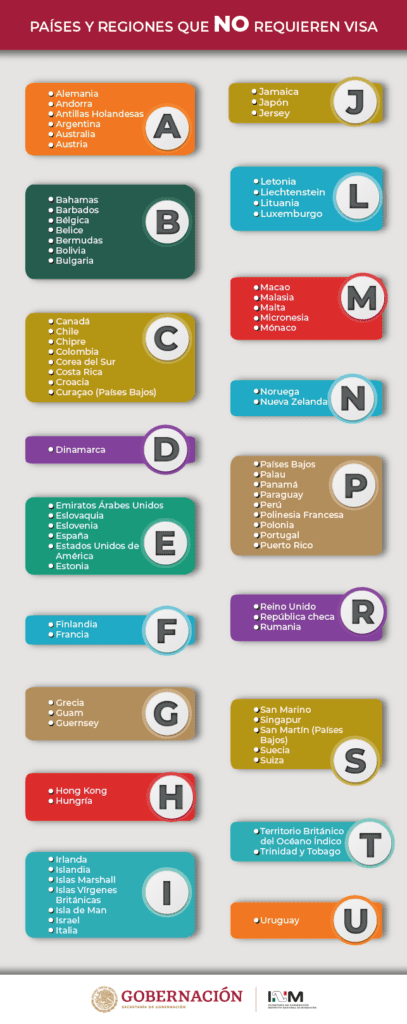
But remember that even though you can be given up to 180 days, there is no guarantee you will get the full 180 days. There have been many cases where tourists have come to Mexico and were given 30, 20, or even 15 days on their tourist visas.
Many people are surprised when they come to Mexico with plans of being here for more than a few weeks or months and are given only days on their Mexican FMM.
Some people may have brought their pets, household goods, or something else they assumed could stay longer. Or maybe you’ve made reservations at an Airbnb for five months and may lose out on some of that expense.
Coupled with that is the unfortunate and terrible advice some “experts” give their audiences on YouTube, advising you to just overstay your FMM. But believe me when I tell you that what they don’t explain is that you can easily get detained by immigration authorities in Mexico if you are caught with an expired FMM and be deported back to your country. While that happens, you will be detained in an immigration jail in Mexico. Trust me, you won’t like it. This isn’t meant to scare you, but rather to give you a realistic view into the risk you run.
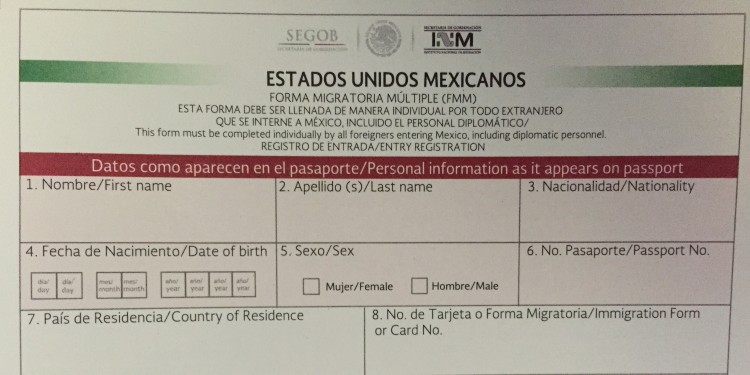
Flying Into Mexico
Some of you will be flying into Mexico to finish your residency visa process.
The fee for an FMMD is usually included in your ticket. Most likely, an agent will give you this form to fill out before entering Mexico. You’ll need to fill out a declaration form before arriving in Mexico, and you only need to fill one out per family.
If you’re coming in to finish your residency visa in Mexico, you’ll need to let an agent know they must mark you as “canje.” It’s super important, and I will cover that in detail later.
If you’re coming in as a tourist, an immigration officer will stamp your passport and issue you a slip with the time or days you are allowed to stay in Mexico. If you need to obtain a visa before your visit, you may need to schedule an appointment at a Mexican Consulate before your trip.
This is up to the immigration agent to process your FMMd upon arrival. You must check the time they write into your FMMd when you arrive in Mexico so that you don’t accidentally overstay your visa permit. Please remember that all airports will issue Digital FMMs (FMMd).
Driving Into Mexico
A lot of people moving to Mexico decide to drive across the border. Makes sense to me. You might have pets. You might have household goods. Or this vehicle may be your transportation method in Mexico. And if you decide to get your residency in Mexico, you might need a car.
If you decide to drive to Mexico, you’ll still need to get an FMM. An FMM costs $861 MXN as of January 1st, 2025.
If you’re coming in as a tourist, you might read online that no one checks this while driving in Mexico. While this may be the case most of the time, you are required by law to get one upon arrival. Getting caught without one could cause trouble for you while you’re in the process of getting your residency visa in Mexico in the future. And no one at the border in Mexico forces you to get an FMM.
So it’s your responsibility to either buy one online ahead of time or get it at the border when you cross.
If you’re coming in for canje, you must get an FMM at the border crossing you drive on. Make sure they mark you as Canje and not as a tourist on your Mexican Resident Visa stamp.
Where to Get An FMM On The Land Border?
When you drive across the border, you have to find the nearest INM office. Usually they are at the land border. Once you register your entry to Mexico, an immigration officer will give you an FMM for up to 180 days if you are from one of the “no visa required countries” and coming in as a tourist.
But suppose you’re coming in as a resident.
In that case, it’s extremely important to let an agent know you are coming in as a resident and not a tourist if you are in the process of residency in Mexico (also known as “canje”).
If they mark your FMM as a tourist, your Mexican Resident Visa will no longer be valid, and you will have to start again. So don’t let an INM agent brush you off.
Getting a TIP permit for your car
You must also apply for a TIP if you drive your car across the border. (Temporary Vehicle Permit) A TIP allows your foreign-plated vehicle to be driven while you are in Mexico.
The cost of a TIP is MXN $1,084.19 MXN, approx $53 USD– depending on the exchange rate. And you have to pay a deposit, which ranges between $300-500 USD, depending on the vehicle.
You can ONLY apply through Banjercito, but I found the process on their website to be very easy!
And if you like to plan, you’ll be pleased to know that you can get your TIP permit from 7 to 60 days before travel. However, we do not recommend getting it weeks in advance because you never know if you will use that same car.
Residency Visas in Mexico

Our clients getting their residency approval at the Philly Mexican consulate.
If you plan to stay in Mexico for more than 180 days, you must apply for a temporary or permanent residence visa. And yes, you can get deported if you’re caught overstaying your visa. If you only want to be in Mexico temporarily, you must leave by the 6-month mark and surrender your FMM.
The most popular visas for ex-pats are either the temporary resident visa (residente temporal) or the permanent resident visa (residente permanente). There are different visa types available for residency in Mexico, each designed for specific groups such as professionals, students, or family members, with their own requirements and application processes.
Depending on your situation, you may be eligible for one or both. I’ll explain how to determine the right one for you and how to apply.
Solvency Requirements for Mexican Temporary Residency
For temporary residency, applicants must meet specific financial criteria to be eligible. The following formula is used, and we have an approximate amount in USD based on an exchange rate of 18.50 MXN to 1 USD.
To satisfy the income and savings requirements, applicants can demonstrate financial means through monthly income, savings, or investments. Consulates may require proof of a minimum balance in bank or investment accounts over a specified period.
Income requirements can vary by consulate, so it is important to be able to qualify financially according to the standards set by each consulate.
Monthly Income Requirement
- Formula: 300 x daily minimum wage
- Total in USD: Approximately $4,283 + USD per month
Savings Requirement
- Formula: 5,000 x daily minimum wage
- Total in USD: Approximately $70,066 USD
The income requirements vary by consulate and are NET (after taxes).
Solvency Requirements for Mexican Permanent Residency
For permanent residency in Mexico, the economic solvency requirements are typically higher. Using a daily minimum wage of 278.80 MXN and an exchange rate of 20 MXN/ 1 USD, here are the updated totals:
In addition to meeting income and savings requirements, some applicants may also qualify for permanent residency by owning property in Mexico that meets a specified minimum market value. The property must have a minimum market value as set by immigration authorities to be considered for this path to residency.
Monthly Income Requirement
- Formula: 500 x daily minimum wage
- Total in USD: Approximately $7,000 + USD per month
Savings Requirement
- Formula: 20,000 x daily minimum wage
- Total in USD: Approximately $280,000 + USD
The income requirements vary by consulate and are NET (after taxes).
*It is worth mentioning that some consulates require you to have a pension/social security benefits or be of retirement age (over 60) to qualify for a Permanent Resident VISA without having the Temporary Resident VISA first. However, different consulates in the USA have different rules.
Additional Dependents
Most consulates expect only the main applicant to qualify with the income requirements I have shared above.
- However, if you are applying as a married couple, an additional $500-$1,800 per dependent needs to be demonstrated in monthly income.
Family members, including a common law partner, may be eligible for residency through family unity/unification. In these cases, you will need to provide official identification and documentation, such as marriage certificates or legal declarations, to prove your relationship.
Of course, this also varied according to the consulate. Some consulates require each applicant to qualify individually. This means they may require each applicant to prove they have the minimum economic solvency requirements. You must verify the requirements with the Mexican consulate to which you intend to apply.
If you are a couple and each person doesn’t meet the minimum requirements, don’t worry! As long as one spouse can obtain Mexican residency, the other spouse can be petitioned from within Mexico without having to prove economic solvency. This is known as family unity/ unification.
Temporary Residents (Canje)
The first part of your residency process will almost always start in your home country. You have to secure a Mexican consulate appointment, and they will check to see if you qualify for residency in Mexico. The cost of this consular appointment is always $54 USD/ $80 CAD or the equivalent based on your home country’s currency. It is non-refundable regardless of whether you are approved or not.

The second part of the process takes place in Mexico and is known as CANJE.
Most temporary residents are initially given their residency cards for one year.
You can renew your residency card UP TO 30 days before it expires. Remember that dates in Mexico are formatted DD/MM/YYY. For example, the card below expires on August 9th, 2023.

If you are outside of Mexico and your temporary residency expires, you have up to 55 days to renew it after its expiration. Once you enter Mexico, you have up to 5 days to start the process at the INM office where you did your canje.
After the first year, you must renew your residency visa and can only do so for up to 4 years. You must renew within Mexico, and you can start the renewal process up to 30 days before it expires.
After 4 years, you can apply to make a switch from temporary to permanent residency. This also has to be done within Mexico.
Work Permit for Temporary Residents
If you wish to work in Mexico as a temporary resident, you must obtain permission to work from INM. Even if you rent an Airbnb in Mexico as a temporary resident, you have to ask INM for permission to work- because you are generating an income.
Permanent Residents are permitted to work without having to process any additional permits. You are supposed to notify INM of your intent to work and what you plan to do.
Permanent Residents
If you are given a permanent residency at the Mexican Consulate that approved your residency, your visa is indefinite and does not need to be renewed.
When you come to Mexico, you pay this amount to finish your process at the INM offices.
Documents Required for Residency
Applying for residency in Mexico—whether you’re seeking a temporary resident visa or a permanent resident visa—means gathering a set of important documents. The exact paperwork you’ll need can vary depending on your personal situation, the type of residency you’re applying for, and the requirements of the Mexican consulate or local immigration office where you submit your application. Here’s a comprehensive checklist to help you prepare for your residency in Mexico:
- Valid Passport: Your passport should be valid for at least six months beyond your intended stay in Mexico. Make sure it’s in good condition and has blank pages for visa stamps.
- Completed Application Form: Download and fill out the official application form for your chosen visa type. This form is usually available on the website of the Mexican consulate or embassy in your home country.
- Proof of Economic Solvency: To prove you meet the minimum monthly income or savings requirements, you’ll need recent bank statements, investment account summaries, or documents showing regular income. The specific amounts required for economic solvency depend on whether you’re applying for temporary residency or permanent residency, and can vary by consulate.
- Original Birth Certificate: An original birth certificate (and sometimes a certified translation) is often required, especially for family unity applications or when applying as a dependent of a Mexican citizen or resident.
- Marriage Certificate: If you’re applying as the spouse of a Mexican national or another resident, you’ll need to provide a marriage certificate. For common law unions, additional documentation may be required (see below).
- Divorce or Death Certificate: If you are widowed or divorced, and your marital status is relevant to your application, you may need to provide these documents to clarify your current status.
- Visa Fee : You’ll need to pay the visa application fee at the consulate or embassy.
- Photographs: Recent, passport-sized color photos are required. Check the specific size and background color requirements with your local Mexican consulate.
- Common Law Union Documents: If you are in a common law relationship, you may need to provide a statutory declaration or affidavit, along with evidence of cohabitation (like joint bank accounts or utility bills in both names).
What Is The Process?
For most expats, you’ll have to start the process for a permanent visa in your country at a Mexican Consulate. You can apply at a Mexican consulate abroad, where you will need to demonstrate income or savings to meet the requirements set by the consulate. Once granted a permanent resident visa, you must go to Mexico to finalize the process.
Your permanent visa is valid indefinitely. You don’t have to renew it as you do with a temporary visa. You’re also allowed to work without applying for a work permit. However, you must tell INM if you have a job offer in Mexico.
Fill out the application in English with this application form below
Mexican Residency Through Family Unity
The same applies to the temporary visa; it is valid for up to 180 days, and once you arrive in Mexico, you have up to 30 days to exchange it for a permanent resident card. This is known as CANJE.
You may qualify to apply for residency without having to prove economic solvency if you have ties to a Mexican national or Mexican resident. For certain family-based residency applications, you may be required to provide documentation proving Mexican nationality.
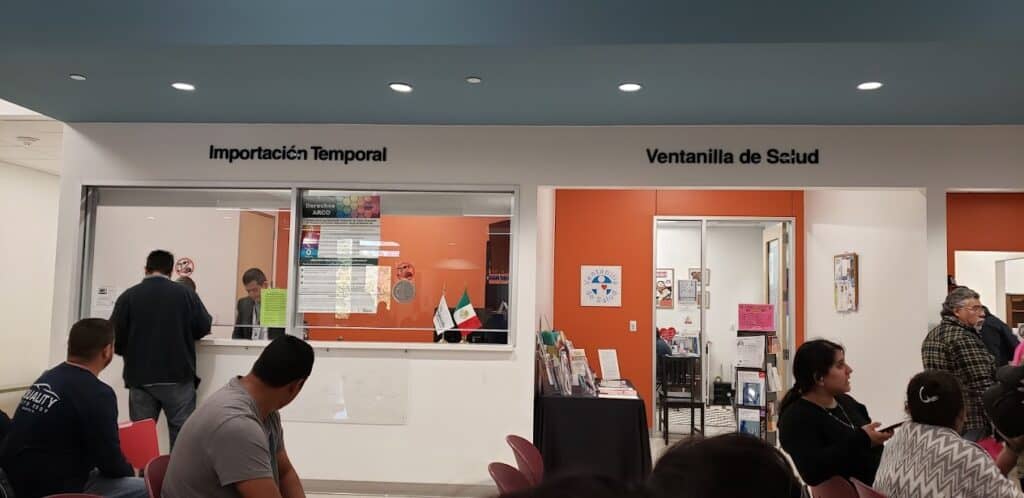
Mexican Consulates around the world help expats get a Mexican Residency Visa
Temporary Residency (Residente Temporal) Application:
Foreigners may apply for Temporary Residency (Residente Temporal) in-country if they are:
- The spouse of a Temporary or Permanent Resident
- The parent of a Temporary Resident
- The son or daughter of a Temporary Resident (Children/dependents must be under 18 and not married)
- The son or daughter of a Temporary Resident spouse (Children/dependents must be under 18 and not married)
- The spouse of a Mexican national. Spouses of Mexican nationals obtain a 2-year temporary residency initially. Afterward, you can apply to obtain a Permanent Resident Visa.
- The spouse or dependent of a foreign resident who already holds legal residency status in Mexico may also apply for temporary residency.
Permanent Residency (Residente Permanente) Application:
Foreigners may apply for Permanent Residency (Residente Permanente) in-country if they are:
- The parent of a Permanent Resident
- The son or daughter of a Permanent Resident card (Children/dependents must be under 18 and not married)
- The sibling of a Permanent Resident (Children/dependents must be under 18 and not married)
- The son or daughter of the spouse of a Permanent Resident (Children/dependents must be under 18 and not married)
- The son or daughter of the spouse of a Mexican National (Children/dependents must be under 18 and not married)
- The parent to a child born in Mexico
- The sibling of a Mexican National (Children/dependents must be under 18 and not married)
Successful applicants will be granted permanent resident status in Mexico.
For this process, you can apply at either a Mexican Consulate near you or start the process in Mexico. Those who are married to Mexican residents can start the process once their Mexican resident spouse obtains their residency card.
Also, current Mexican Temporary Residents may apply to exchange their Temporary Residency Visa for a Permanent Residency Visa after 4 years from Mexico.
Immigration Fees
There are a couple of fees associated with applying for and obtaining a Mexican Residency. First there is the Consulate fee, which by the way changes yearly.
You also have to consider the fees to process your Canje, Family unification, or other immigration processes.
For the most up to date immigration fees, go here.
Consulate Shopping
If your local Mexican consulate doesn’t have appointments, imposes higher solvency requirements, or just flat-out denies you; you’re free to do what is known as “consulate shopping”.
Do your homework, confirm they’ll see you, meet their requirements, and arrive with every document in perfect order. That extra legwork often turns a rejection into the residency sticker you’re after. Because that is just the way the system works. 😉
If you were denied and want to try again fast
- There’s no mandatory cooling-off period—you can go to another consulate right away.
- Fix the reason for the denial first (insufficient funds, missing originals, wrong documents, etc.).
- Prepare to show stronger evidence or a different financial path (e.g., switch from income to savings. Don’t move money around in your accounts prior to your appointment- this can raise red flags).
- Keep your story consistent; officers see repeat applicants all the time and appreciate clear explanations.
Having A Mexican Resident Visa Has Benefits!
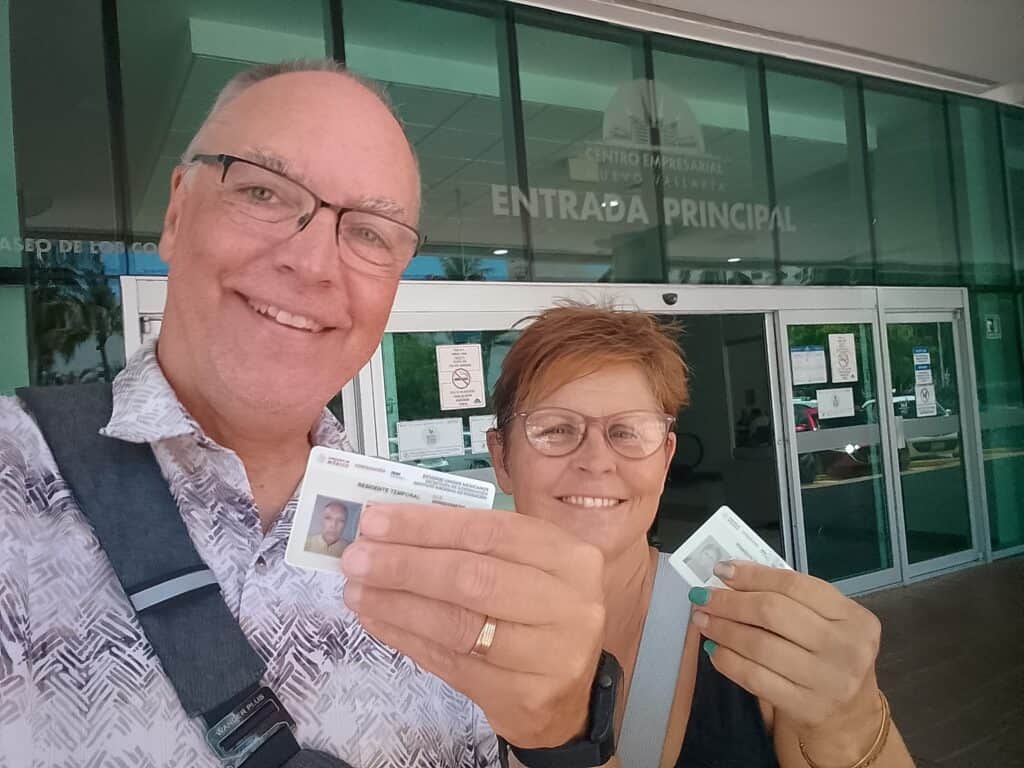
But what if you’re unsure if you plan to live in Mexico full-time? That’s ok! You don’t have to live in Mexico full-time to remain a resident of Mexico. The only caveat is that if you become a temporary resident, you must come back in person to renew it. So, if you think retirement or living in Mexico might be in your future, I encourage you to look into residency sooner rather than later.
There are some additional perks of being a resident in Mexico, such as:
- You can come in and out of Mexico as you’d like
- Residency facilitates opening a bank account
- You can bring your foreign-plated car free of import taxes (Temporary only)
- You can bring your household goods to Mexico free of import taxes
- You have access to Mexico’s low-cost healthcare through the Mexican Social Security Institute (IMSS)
- Many private healthcare insurance companies require you to be a resident
- You can apply for a Mexican driver’s license
- You can work in Mexico or run a business in Mexico
- You can register/nationalize a vehicle in Mexico
- Reduced capital gains taxes owed when you sell a property in Mexico
- Discounts for locals only
- The cost of getting a residency is very affordable compared to other countries.
- You can bring pets with you long-term
- You can invest in Mexico’s CDs, which currently have a great ROI
- And so many more!
Tips For Applying Under Economic Solvency
A question we get from time to time is, “Should I apply for residency while I am working or after I leave my job/retire?” Here are my two cents:
If you’re applying for Mexican Residency under economic solvency, we recommend applying while you are still working in most cases. This is especially true for those who will not be retired and will not be using savings/investments as their proof of solvency.
It’s always better to demonstrate to the consulate that you are earning a steady income so they will consider your approval. It’s harder to explain that you may be financially independent while you’re not retired for them to consider your approval.
I’m not saying this is 100% always the case, but in our experience, we recommend applying while you are still generating a regular income. Also, if you are applying based on monthly income, and you plan to quit your job after receiving your residency, DO NOT volunteer this information to any consulate. It’s a quick way for them to consider that you will no longer have this solvency, and they can deny you.
To support your application for residency under economic solvency, be sure to prepare the following documents as required by the consulate.
Should You Hire An Immigration Facilitator?
Hiring an immigration facilitator can save you weeks of frustration, especially if you don’t speak fluent Spanish or can’t secure a consulate appointment. An immigration facilitator can guide the interested party through each step of the residency visa application process, ensuring all requirements are met. We’ve vetted trustworthy, affordable facilitators across Mexico who speak English and Spanish, know the best INM offices, and can guide you from start to finish.
Get access to our vetted immigration facilitators in Mexico.
Mexican Bureaucracy Is Challenging
Ask any local or foreigner living in Mexico what they think about Mexican bureaucracy, and I guarantee you will get a few eye rolls. It’s one of the most frustrating things you will have to deal with when you move to Mexico, but trust me, once you learn to accept that nothing will be super easy, you will live a happier life.
During the residency application process, applicants will need to interact with Mexican authorities, who are responsible for issuing visas, processing residency applications, and enforcing immigration policies.
Mexican government offices sometimes use very old-school procedures for handling immigration, and it is no exception.
And while doing the process on your own isn’t impossible, knowing and hiring the right people to help you can save you time, frustrations, and money.
Many immigration offices in Mexico only take online appointments. From renewals to canje to family unification processes, you won’t be seen if you don’t have your online appointment confirmation. Many people don’t realize this. And they might come to Mexico thinking they might be able to finish their residency process in a matter of days. However, they discovered they needed to invest about 2-4 weeks or until an appointment was available. But what happens if you have a job to return to? Or pets or family?
It’s also not uncommon for some immigration offices in Mexico to run out of plastic. So what could have taken 1 day to complete might now take 3-4 days.
Knowing the right facilitators and having access to the right information can help you avoid some of these surprises. You have to keep in mind they do this for a living. They are at the immigration offices daily. They know what’s happening in real time. Plus, they can help you shorten your processing times and help you avoid unnecessary frustrations.
You’re paying for that when you hire a good immigration facilitator. Someone who can help guide you. Someone who knows the local procedure. What’s your time worth to you?
However, not all immigration facilitators are created equal.
And if you don’t know what to look for, you could get scammed. I see it all the time. “Reputable” immigration facilitators recommended by other “experts” end up wasting that person’s money or time.
Not sure which is worse. I’ve seen people lose money because their facilitator made a crucial error and can’t fix it, but won’t give them their money back. I’ve seen facilitators take payment and not return phone calls.
That’s why hiring the right people can make all the difference. And you can take the guesswork out of knowing who to hire with our COMPLETE Mexico Relocation Guide. This gives you access to the immigration facilitators we know as trustworthy, responsive, and professional.
That way, you have one less thing to worry about.





